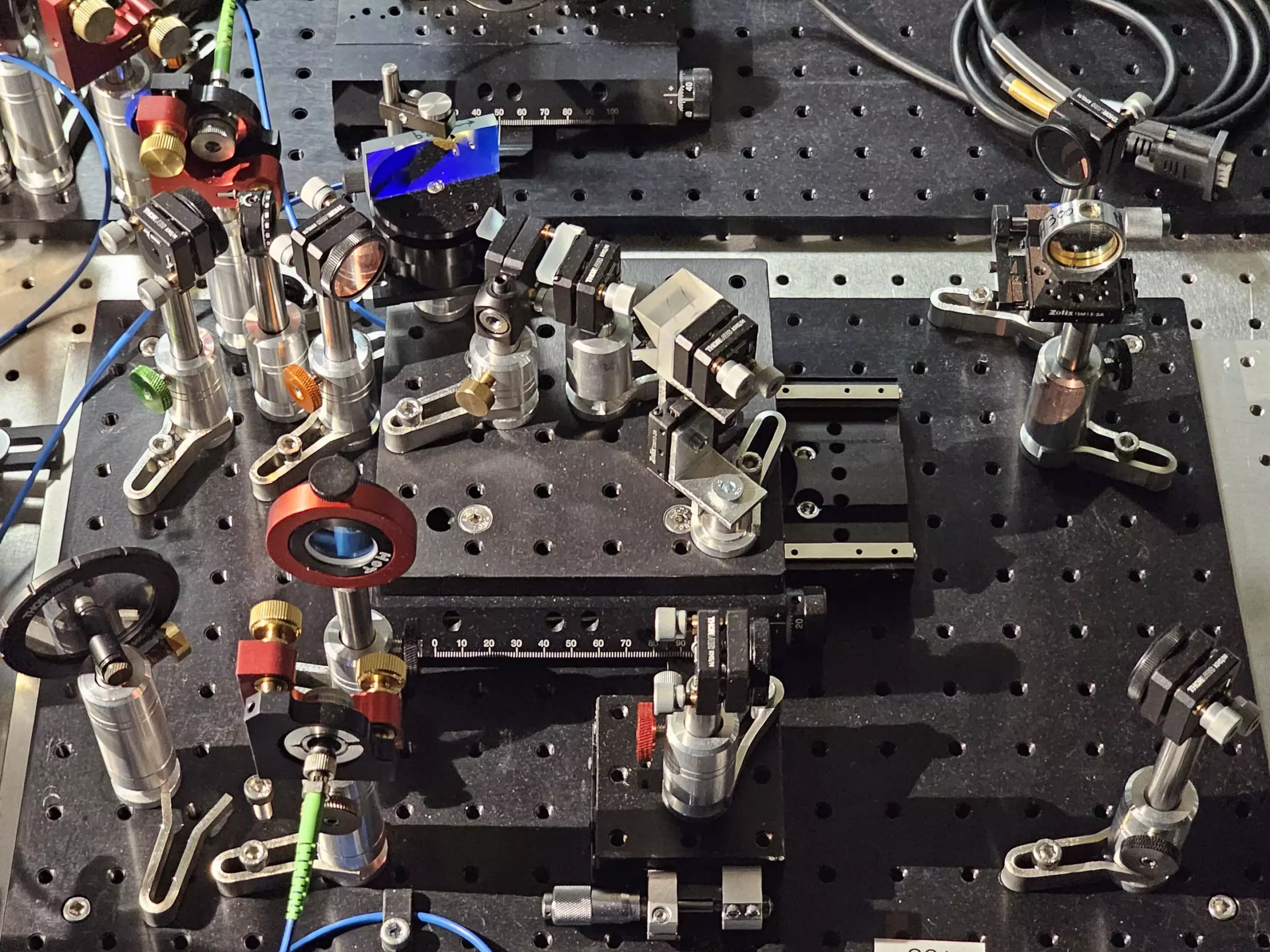In a significant breakthrough, a team of researchers from the University of Warsaw has designed a quantum-inspired spectrometer capable of super-resolving short light pulses. This noteworthy advancement, developed in the Quantum Optical Devices Lab at the university’s Centre for Quantum Optical Technologies, not only enhances the capabilities of spectroscopy but also holds promise for future applications in optical and quantum networks. By offering over double the resolution of conventional techniques, this innovative device could change how we analyze light spectra, providing deeper insights into both chemical substances and astrophysical phenomena. Such a leap in technology was published in the prestigious journal, Optica, signaling a pivotal moment in the field of optics and quantum sciences.
At its core, spectroscopy is the study of different colors—or spectra—of light emitted by various substances. Each material has unique characteristics that are revealed through its specific light spectrum. For example, by examining the light emitted by a chemical compound, scientists can discern its identity and properties. Similarly, the light spectrum from a distant star can provide information about its physical characteristics, such as size, composition, and even age. Spectroscopy is not limited to these scientific queries; it also plays a crucial role in modern communications. Optical channels, like those used in fiber networks, leverage different light colors for simultaneous data transmission, akin to how radio bands are utilized to send multiple channels of information. As we approach a future where secure quantum communications become paramount, the importance of advancing spectroscopic techniques cannot be overstated.
One of the significant hurdles in spectroscopy is the challenge of discerning closely overlapping channels or spectral lines. This challenge is historically rooted in what is known as the Rayleigh criterion, articulated by John William Strutt, Lord Rayleigh. As two spectral lines draw nearer to each other, traditional techniques become less effective, often rendering them indistinguishable. Historically, conventional spectroscopy methods have neglected a critical aspect of light: the latent information embedded in the phase of electromagnetic fields. This omission has limited the resolution capabilities of standard imaging and spectroscopic techniques.
Recent explorations in quantum information science reveal that by transforming the electromagnetic field’s complex nature before detection, significant latent information can be harnessed effectively. Such quantum-inspired approaches stand to revolutionize the way researchers interpret light and its various components, especially regarding ultrafast pulses.
The newly developed device, known as SUSI (Super-resolution of Ultrafast pulses via Spectral Inversion), incorporates principles from super-resolution techniques found in quantum imaging. The fundamental operation of SUSI mirrors the principles of an interferometer, wherein the light emanating from a source undergoes a transformative process. In essence, SUSI enables researchers to distinguish between light pulses that would typically overlap, thus improving resolution beyond traditional imaging capabilities.
In practical terms, SUSI operates by dividing incoming light pulses into two arms: one being modified by a device that essentially inverts the image, while the second arm remains as the original. The interaction between these two paths allows for enhanced visibility of closely spaced light sources. In scenarios involving multiple nearby light sources or pulses, the number of photons detected in the interferometer provides quantifiable data about their spatial separation—a phenomenon that significantly outperforms conventional imaging methods.
The implications of SUSI extend far beyond mere imaging; they are revolutionary for the analysis of time and frequency encoded in light pulses. In a standard measurement scenario, overlapping frequencies cause complications in discerning the individual colors or channels present. By employing the SUSI approach, researchers can leverage Fourier and inverse Fourier transforms in a balanced arm configuration to enhance measurement precision significantly.
The design developed by Ph.D. student Michał Lipka under the mentorship of Dr. Michał Parniak demonstrates not only theoretical rigor but also practical feasibility. With all components within the SUSI design capable of being synthesized onto photonic chips, the potential for integration into future super-spectrometers and quantum communication devices is immense. This integration promises to offer unprecedented enhancements in resolution, thus paving the way for advancements in both optical technologies and quantum networking.
The development of SUSI exemplifies an ambitious stride towards overcoming the limitations of traditional spectroscopy. With its potential applications in a myriad of fields—from astrophysics to communications technology—this groundbreaking research not only augments our understanding of light spectra but also heralds a new era in optical and quantum technologies. As researchers at the University of Warsaw continue to refine and expand upon these concepts, it is clear that the future of spectroscopy is poised for extraordinary growth, providing richer and more detailed insights into the fundamental nature of both matter and light.


Leave a Reply